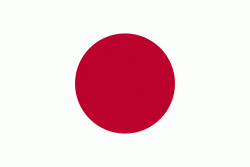Shinjuku (Shinjuku-ku)
Shinjuku (新宿区) is a special ward in Tokyo, Japan. It is a major commercial and administrative centre, housing the northern half of the busiest railway station in the world (Shinjuku Station) and the Tokyo Metropolitan Government Building, the administration centre for the government of Tokyo. As of 2018, the ward has an estimated population of 346,235, and a population density of 18,232 people per km2. The total area is 18.23 km2. Since the end of the Second World War, Shinjuku has been a major secondary center of Tokyo (fukutoshin), rivaling to the original city center in Marunouchi and Ginza. It literally means "New Inn Ward".
Shinjuku is also commonly used to refer to the entire area surrounding Shinjuku Station. The southern half of this area and of the station in fact belong to Yoyogi and Sendagaya districts of the neighboring Shibuya ward.
Shinjuku is surrounded by Chiyoda to the east; Bunkyo and Toshima to the north; Nakano to the west, and Shibuya and Minato to the south. The current city of Shinjuku grew out of several separate towns and villages, which have retained some distinctions despite growing together as part of the Tokyo metropolis.
* East Shinjuku (or administratively called Shinjuku, Shinjuku-ku): The area east of Shinjuku Station and surrounding Shinjuku-sanchome Station, historically known as Naito-Shinjuku, houses the city hall and the flagship Isetan department store, as well as several smaller areas of interest:
* Kabukichō: Tokyo's best-known red-light district, renowned for its variety of bars, restaurants, and sex-related establishments.
* Golden Gai: An area of tiny shanty-style bars and clubs. Musicians, artists, journalists, actors and directors gather here, and the ramshackle walls of the bars are literally plastered with film posters.
* Shinjuku Gyo-en: A large park, 58.3 hectares, 3.5 km in circumference, blending Japanese traditional, English landscape and French formal style gardens.
* Shinjuku Ni-chōme: Tokyo's best-known gay district.
* Nishi-Shinjuku: The area west of Shinjuku Station, historically known as Yodobashi, is home to Tokyo's largest concentration of skyscrapers. Several of the tallest buildings in Tokyo are located in this area, including the Tokyo Metropolitan Government Building, KDDI Building and Park Tower.
* Ochiai: The northwestern corner of Shinjuku, extending to the area around Ochiai-minami-nagasaki Station and the south side of Mejiro Station, is largely residential with a small business district around Nakai Station.
Shinjuku is also commonly used to refer to the entire area surrounding Shinjuku Station. The southern half of this area and of the station in fact belong to Yoyogi and Sendagaya districts of the neighboring Shibuya ward.
Shinjuku is surrounded by Chiyoda to the east; Bunkyo and Toshima to the north; Nakano to the west, and Shibuya and Minato to the south. The current city of Shinjuku grew out of several separate towns and villages, which have retained some distinctions despite growing together as part of the Tokyo metropolis.
* East Shinjuku (or administratively called Shinjuku, Shinjuku-ku): The area east of Shinjuku Station and surrounding Shinjuku-sanchome Station, historically known as Naito-Shinjuku, houses the city hall and the flagship Isetan department store, as well as several smaller areas of interest:
* Kabukichō: Tokyo's best-known red-light district, renowned for its variety of bars, restaurants, and sex-related establishments.
* Golden Gai: An area of tiny shanty-style bars and clubs. Musicians, artists, journalists, actors and directors gather here, and the ramshackle walls of the bars are literally plastered with film posters.
* Shinjuku Gyo-en: A large park, 58.3 hectares, 3.5 km in circumference, blending Japanese traditional, English landscape and French formal style gardens.
* Shinjuku Ni-chōme: Tokyo's best-known gay district.
* Nishi-Shinjuku: The area west of Shinjuku Station, historically known as Yodobashi, is home to Tokyo's largest concentration of skyscrapers. Several of the tallest buildings in Tokyo are located in this area, including the Tokyo Metropolitan Government Building, KDDI Building and Park Tower.
* Ochiai: The northwestern corner of Shinjuku, extending to the area around Ochiai-minami-nagasaki Station and the south side of Mejiro Station, is largely residential with a small business district around Nakai Station.
Map - Shinjuku (Shinjuku-ku)
Map
Country - Japan
 |
 |
| Flag of Japan | |
Japan is the eleventh most populous country in the world, as well as one of the most densely populated and urbanized. About three-fourths of the country's terrain is mountainous, concentrating its population of 124.8 million on narrow coastal plains. Japan is divided into 47 administrative prefectures and eight traditional regions. The Greater Tokyo Area is the most populous metropolitan area in the world, with more than 37.2 million residents.
Currency / Language
| ISO | Currency | Symbol | Significant figures |
|---|---|---|---|
| JPY | Japanese yen | ¥ | 0 |
| ISO | Language |
|---|---|
| JA | Japanese language |















